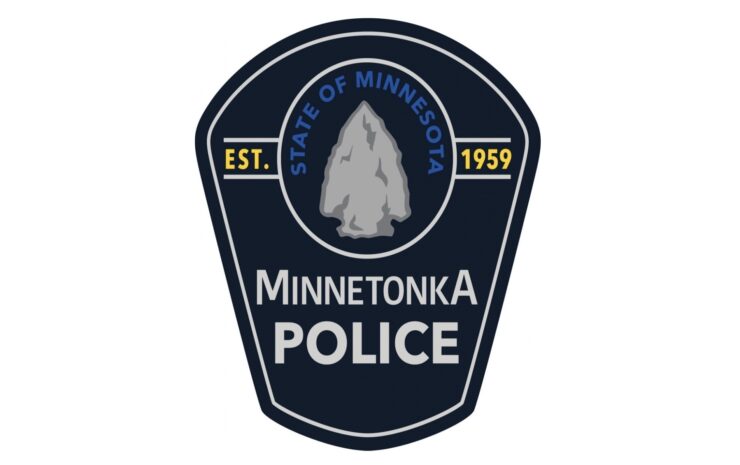Minnetonka Police Launch Minnesota’s First Drone as First Responder Program

The Minnetonka Police Department, serving a suburban community located roughly 10 miles west of Minneapolis, MN, with a population of nearly 54,000, is the first in the state to deploy drones in a real-time emergency response model as part of a Drones as First Responder (DFR) program. The department began developing the program more than two years ago and recently obtained full approval from the Federal Aviation Administration (FAA) to operate drones Beyond Visual Line of Sight (BVLOS), a critical component of any scalable DFR program.
According to the police department, the goal is not to replace officers on the ground, but to give them an eye in the sky before they arrive at a scene. By launching a drone immediately after a 911 call is received, the department can deliver live video footage to responding units, command staff, and dispatchers within moments. “We’re able to get drones on scene much faster than officers can respond in a car,” said Minnetonka Police Chief Scott Boerboom. “The real-time intelligence allows us to make better decisions and keep everyone safer.”
The DFR program currently operates out of one launch site located near Minnetonka’s police headquarters. It uses an automated drone-in-a-box system that allows for rapid deployment without the need for an on-site pilot. The system is overseen by FAA-certified Part 107 pilots who monitor the drone’s flight path and maintain command over operations from a remote location. When a high-priority call comes in, such as a robbery in progress, a disturbance, or an accident with injuries, the drone is dispatched automatically to the scene.
The program is powered by technology from California-based Flying Lion, Inc., a leading provider of public safety drone solutions founded by Barry Brennan in 2014. Flying Lion has supported several other DFR programs across the country, including in Chula Vista, CA, the first department in the United States to receive BVLOS approval for drone response operations. In Minnetonka, Flying Lion provides the remote pilot staffing and operational support that allows the system to function as a 24/7 tool for first responders.
According to the Minnetonka Police Department, the program is designed with both safety and privacy in mind. All drone flights are logged, recorded, and reviewed, and the department has implemented strict policies governing data retention and authorized use. The drones do not conduct random surveillance and are only deployed in response to specific calls for service. “The drones aren’t flying around the city looking for things to get involved in,” said Chief Boerboom. “They are dispatched in response to a specific event, just like an officer would be.” To help educate the community and maintain transparency, the department held a public demonstration of the system earlier this year and regularly posts updates to its website and social media channels.
The FAA’s BVLOS approval allows Minnetonka’s DFR program to operate without the need for visual observers stationed along the flight path, a key requirement that has historically limited the scalability of drone programs. With this approval in place, the department now has the flexibility to expand the program to additional launch sites across the city and increase its coverage area. Chief Boerboom said the department eventually hopes to have three or four drone hubs throughout Minnetonka, which would allow them to respond to nearly any location in the city within a few minutes.
Minnetonka joins a steadily growing population of emergency response agencies across the country implementing DFR programs. In Minnetonka’s case, the police department sees the program as an investment in both officer safety and community trust. As Chief Boerboom puts it, “It’s another tool to help us protect the community, and it gives us a better opportunity to get things resolved peacefully and safely.”
With the system now operational and FAA approval secured, Minnetonka plans to refine and expand its drone response model in the months ahead. If successful, it could serve as a blueprint for other Minnesota cities considering similar initiatives. As public safety agencies continue exploring new technologies to meet modern challenges, Minnetonka’s DFR program is poised to set a new standard for what emergency response can look like in the 21st century.
|